I think Ultrahuman and WHOOP have done this really well as they've essentially become global products. We also need to do the same, however, I believe it's best to begin in larger markets and then return to India (when its longevity market will also be booming).
It seems ideal to begin in one of 2 places:
- USA / North America
- UAE
This thesis comes from 2 things primarily:
- Almost all market research reports state that the biohacking / longevity market is largest in the USA right now, which also makes sense with their higher propensity to pay.
Proving that USA is the best way to go(click to open & close)
Market research reports for our competitors (Oura, WHOOP, Ultrahuman) and for bio-hacking & longevity also overwhelmingly show North America / USA as the largest market.


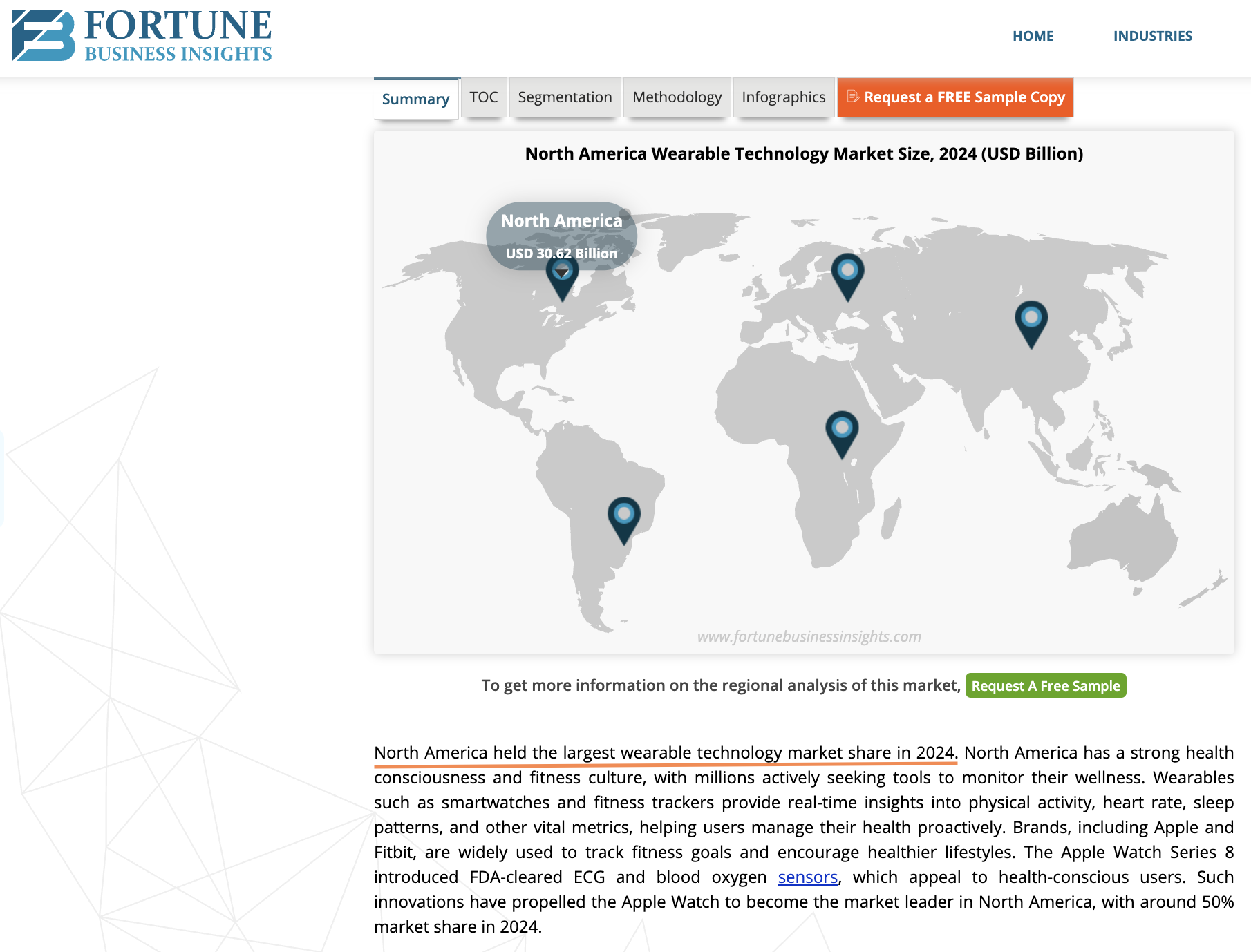
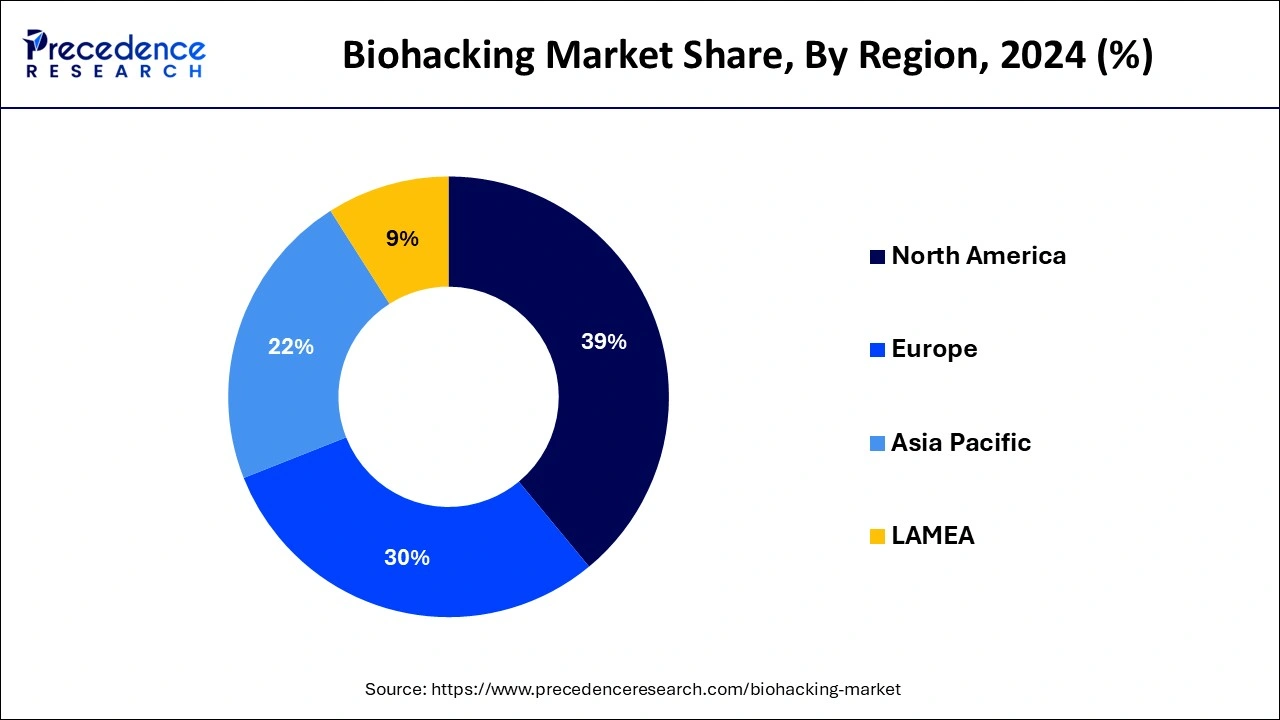
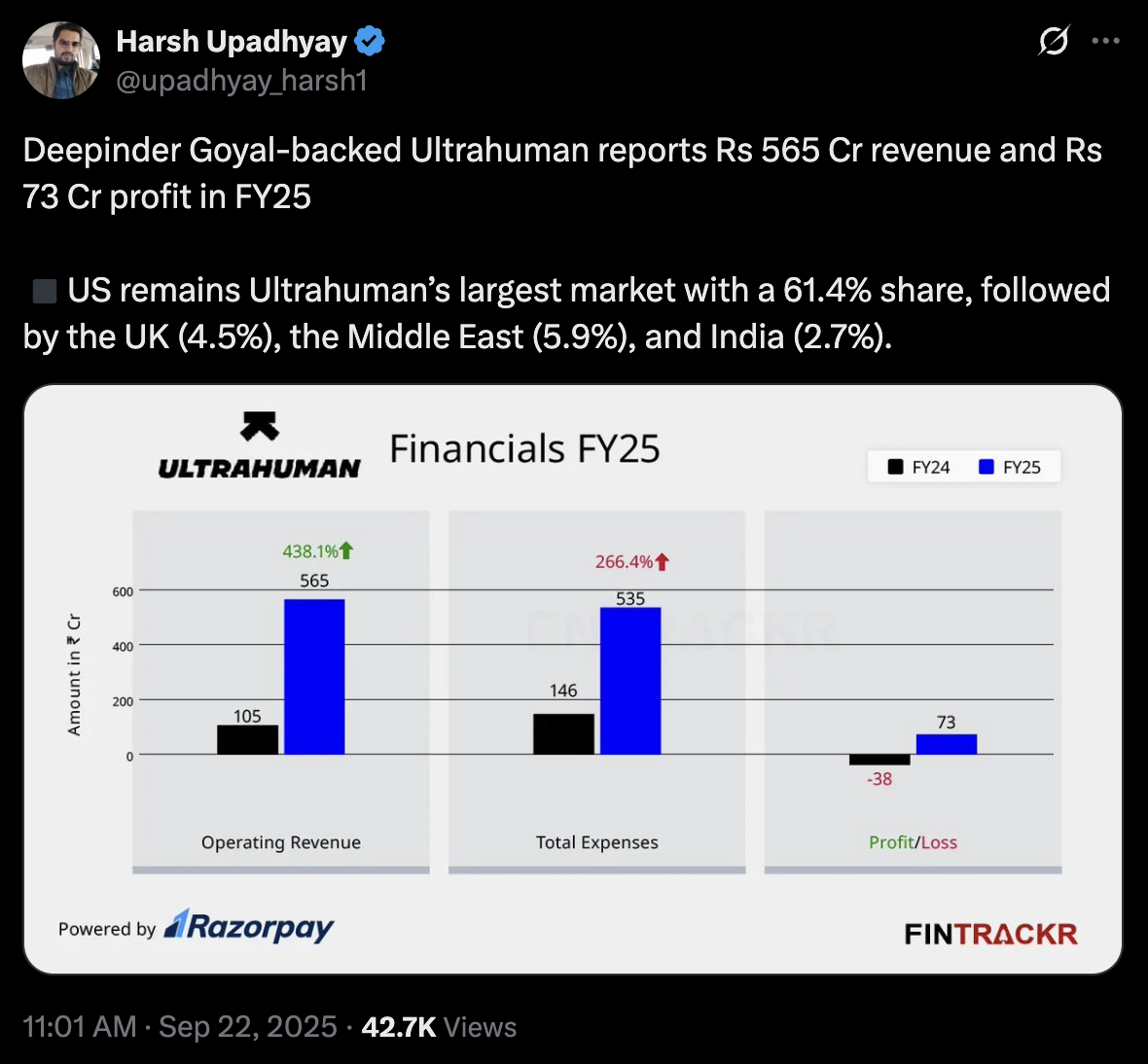
- Taking Google Search Trends as proxy for interest in our competitors' products also develops a good idea about the markets in which they're most popular.
Google Search Trends(click to open & close)
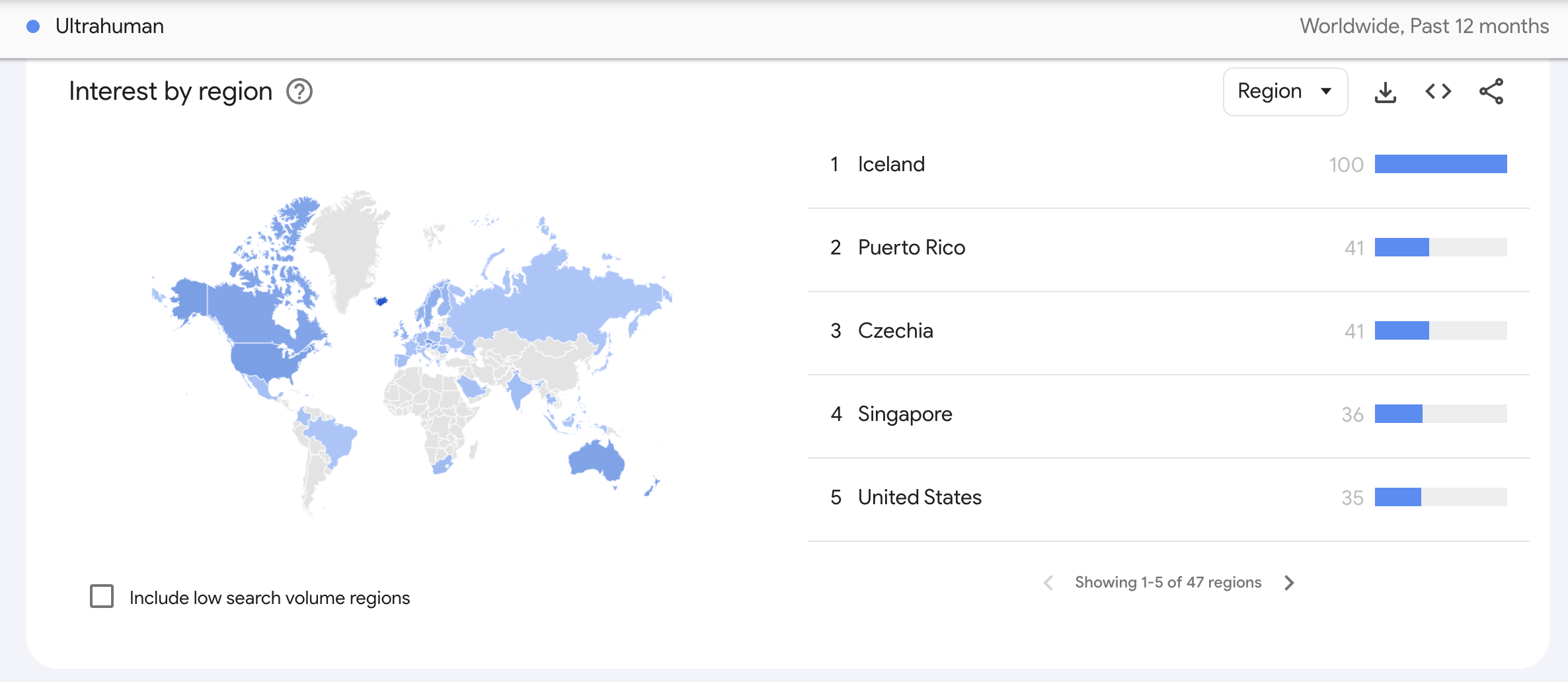
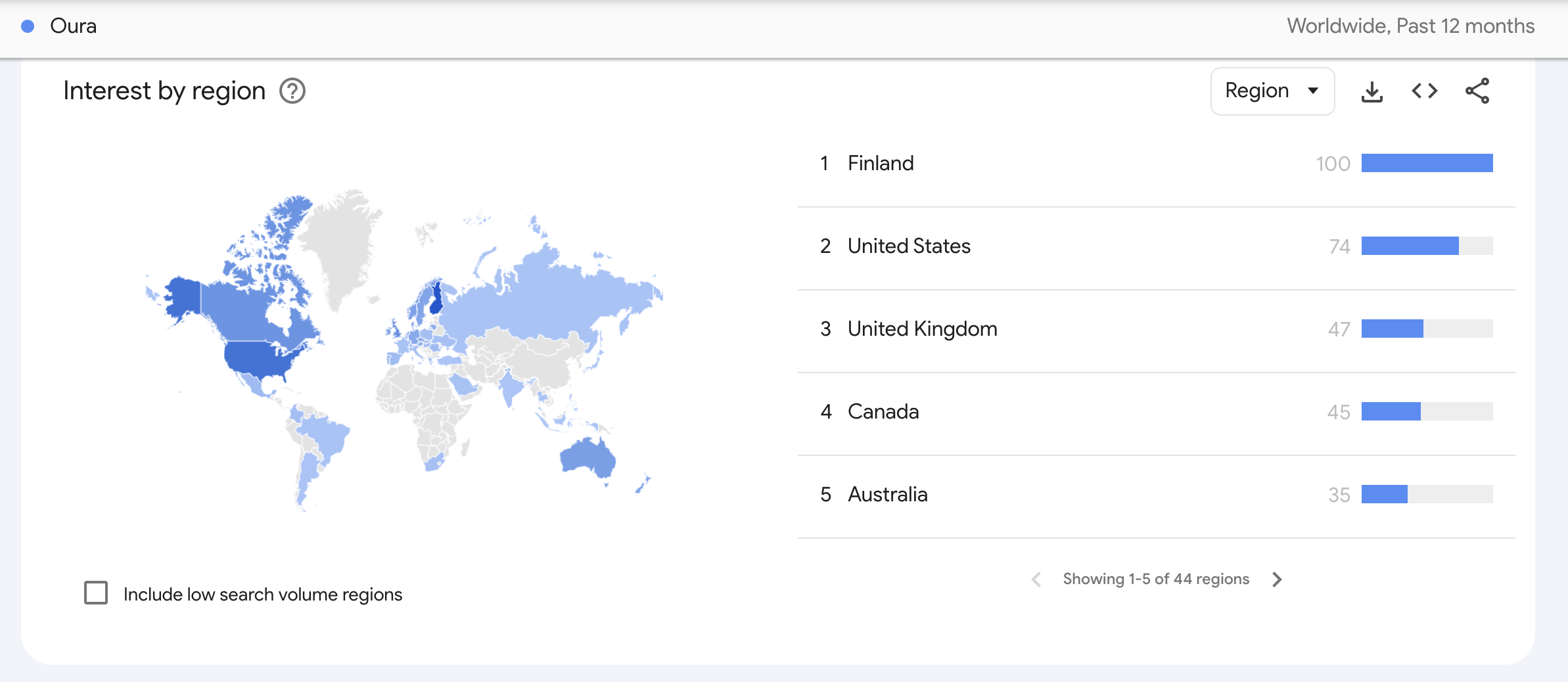

So, in our case, when going to market, I believe we need to solve for 2 things primarily: Credibility & Reach
- It makes sense to take a longform-first approach as our audience is smarter and less likely to be teased by short clickbait reels or ads, especially considering that the price point will be significant. This approach will help with both credibility and reach.
- We can also increase both credibility and reach in local communities by partnerships with gyms, gym trainers, running clubs & health studios in the US.
(I add such people in our target market as they’re actively looking to improve their health and they can become great marketeers for us in their communities as their word will probably mean a lot!) - As tired as the idea may sound, a Temple podcast would be quite useful and would actually work. Not only will it allow us to have greater reach and show the people building the brand (which adds trust), but we can also create greater credibility for the brand by having a network of Temple Partners who are top minds in the longevity field. We can organise meetups / discussions with these people, essentially making them brand ambassadors for Temple. The podcast also helps greatly in this longer-term goal of the network.
- We can use Deepinder’s network to introduce this device into entrepreneur communities like YPO, EO, Offline Club, where most members are focused on increasing both their lifespan & healthspan and have disposable income. This would help with credibility, with some of the top minds in the world wearing our product. This will also greatly help with the B2B approach I have detailed in my last point.
- We can expand our US reach through college and club sports partnerships in sports such as football, basketball, baseball etc. The younger generation shows heightened health awareness, and partnerships with college teams should be fairly accessible and cost-effective. This is the WHOOP approach, extrapolated to this context and would be helpful as these sportspersons are popular in their relatively smaller college communities, and they also go on to represent US at an international level and this allows us to ‘catch them young’.
(focus on baseball could also help us break into the Japan market, which is also touted as one of the frontrunners in longevity awareness) - The obvious, yet important way to increase reach is to be on the platforms where our users are. This includes Walmart, Target, Amazon, Best Buy.
This is a slightly longer process (due to US entity registration etc.) and requirements differ slightly for each retailer. Even if we were to satisfy these, we would still only be listed on the online store, and would need a buyer (all these retailers have middlemen buyers who then sell the stuff to the retailers) who vets us and then puts us in these stores.
Even though they are our competitors (but are ex-Zomans), talking to Ultrahuman founders could be of great help as they've cracked this code and even gotten into Costco & Sam's Club. - The B2B Approach: Based on some of the features that I listed earlier (focused on stress, sleep and productivity mapping), we should also look to sell these to corporates as part of health packages for their employees. We can take this a level further by approaching insurance providers like Plum, who can benefit from it in 2 ways: One, by selling it as part of their 'healthcare for teams' product offering. Second, they can custom-price a company's insurance plan basis the health markers that our device is providing them, giving them the ability to craft a more fact-based & informed plan.
Repository of Youtubers(click to open & close)
Repository of Blogs(click to open & close)
Repository of Gyms(click to open & close)
This is a list of gym-chains. How I expect the funnel to go is:
we partner up with a couple of these chains (perhaps just for a few locations if not all) → talk to gym trainers to recommend our product → also get to know about other popular gyms in that locality (that might not be chains)
Solving for both credibility & reach will also allow us to solve my biggest problem with the product, which is normalising wearing something attached to your head for a large part of the day. We can also spread awareness about why our product is the best (via our podcast), which will further help increase reach and normalise the act of wearing a device at your temple.
Outside of concerns for the product, with respect to concerns for GTM, I believe we need to figure out a way to reduce the time-to-value for the product. For a measurement product like the Ultrahuman Ring Air, it was a month, and with the early reviews I have been able to find for treatment products like https://dreamspan.co/, it's less than a week.
We need to reduce the time-to-value to ensure that word of mouth / credibility building starts earlier.